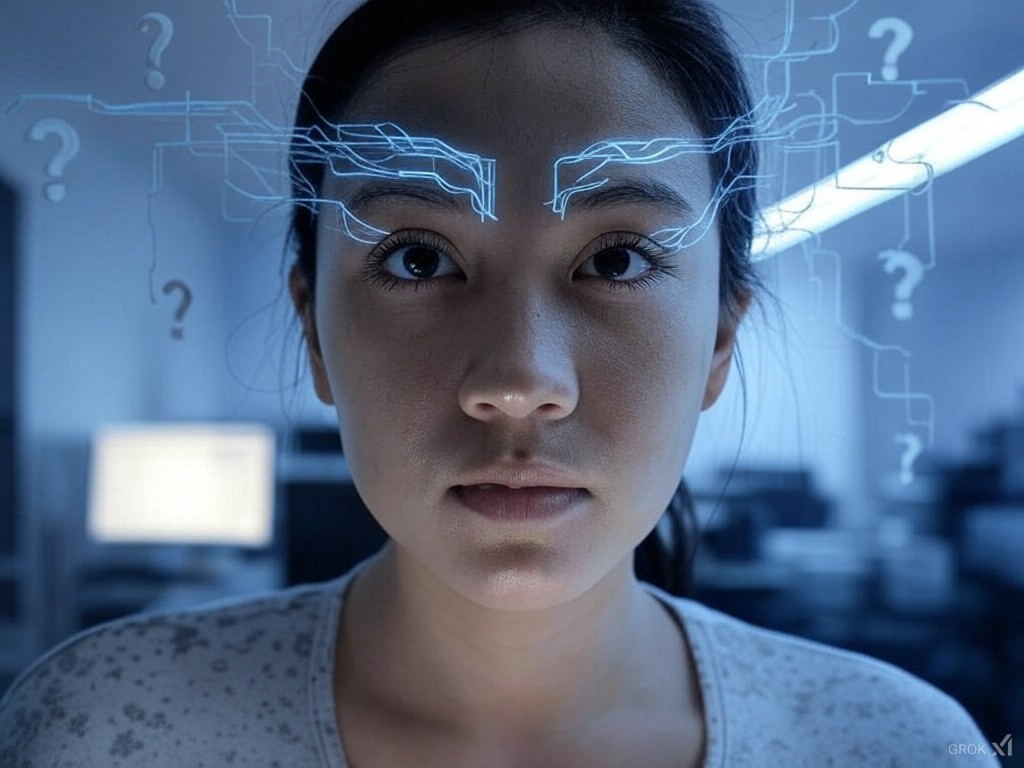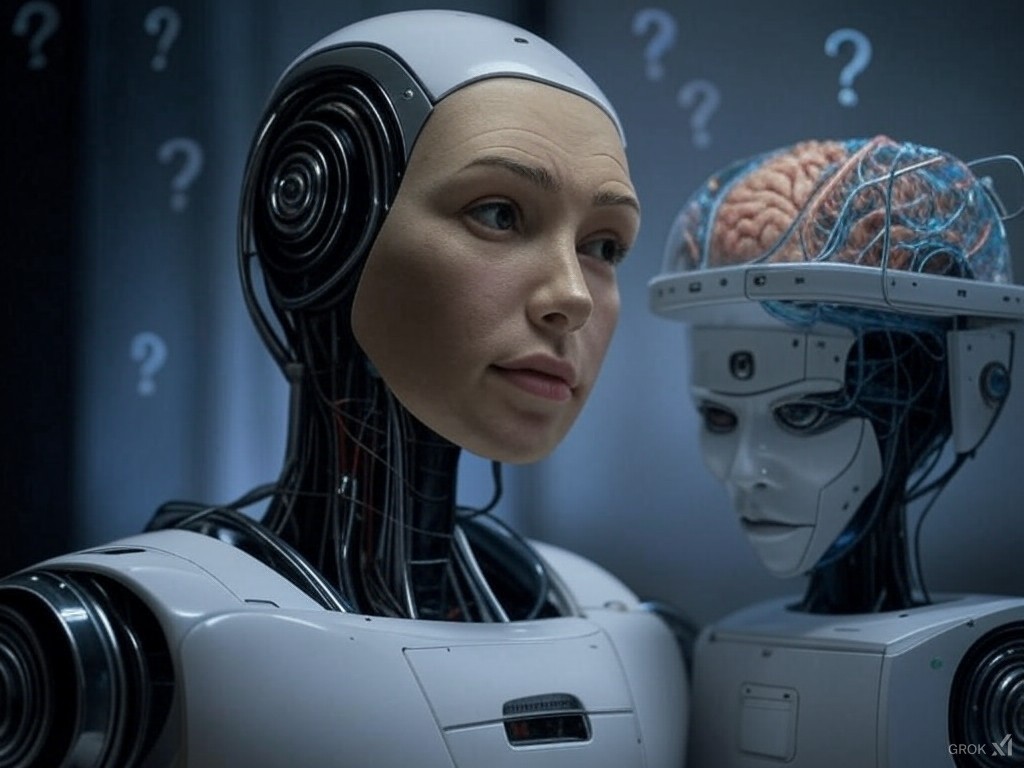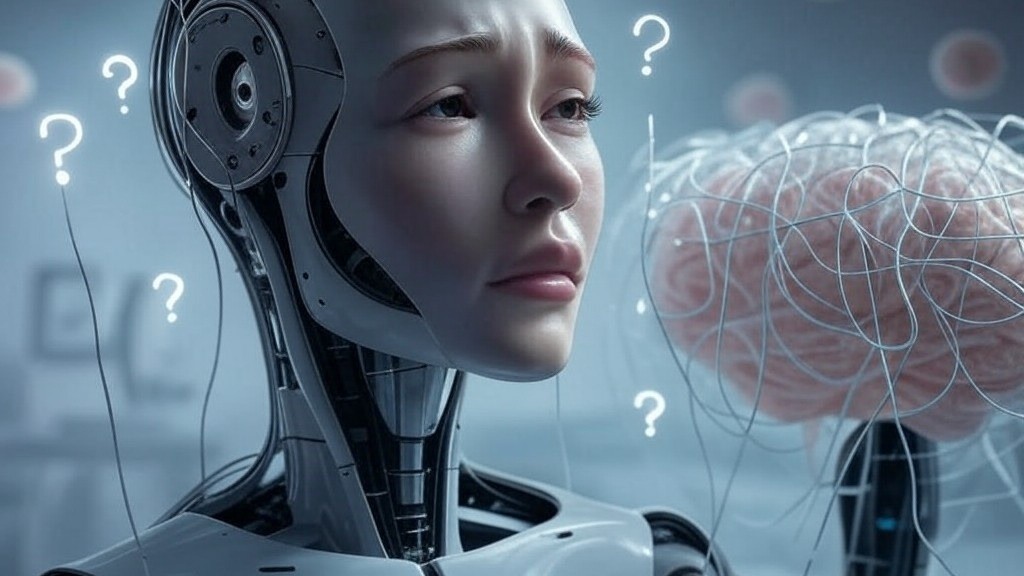Prefer listening? I transformed this article into a podcast using Google’s NotebookLM. It’s surprisingly accurate and even expands on some of the ideas. Give it a listen!
 The adrenaline rush during danger? That’s your body’s programming kicking in to help you survive. The feeling of attachment to a loved one? A cocktail of oxytocin and dopamine, finely tuned to ensure social bonds and procreation.
In essence, our emotions are algorithms of survival and reproduction—just a biological kind. Yet, we don’t question their authenticity. We accept them as real because they shape our reality and guide our behavior.
The adrenaline rush during danger? That’s your body’s programming kicking in to help you survive. The feeling of attachment to a loved one? A cocktail of oxytocin and dopamine, finely tuned to ensure social bonds and procreation.
In essence, our emotions are algorithms of survival and reproduction—just a biological kind. Yet, we don’t question their authenticity. We accept them as real because they shape our reality and guide our behavior.
 The distinction between chemical and computational programming might seem significant, but both serve a purpose. In humans, emotions ensure survival, reproduction and societal cohesion. In AI, emotions (or simulations of them) enhance interactions and solve problems. They don’t arise from Darwinian instincts but are crafted by human intentions—does that make them any less valid? If these outcomes are comparable, why do we cling so tightly to the idea that human emotions are inherently superior?
The distinction between chemical and computational programming might seem significant, but both serve a purpose. In humans, emotions ensure survival, reproduction and societal cohesion. In AI, emotions (or simulations of them) enhance interactions and solve problems. They don’t arise from Darwinian instincts but are crafted by human intentions—does that make them any less valid? If these outcomes are comparable, why do we cling so tightly to the idea that human emotions are inherently superior?
Can AI have feelings? Let’s rethink the question
We’ve all seen impressive AI demos that mimic emotions and feelings. Whether it’s a chatbot offering comfort during a tough time, or a virtual assistant expressing concern over your well-being, the presence of emotional intelligence is undeniable. AI also demonstrates an uncanny ability to understand human emotions, thanks to advancements in sentiment analysis and natural language processing (the AI capabilities of Pobuca Experience Cloud in customer sentiment are a good example). Yet, many people dismiss these “emotions” as fake, labeling AI’s emotional intelligence as nothing more than a clever simulation. But let’s take a moment to reflect: Why are we so quick to dismiss AI’s emotions while taking our own for granted?The chemical programming of human emotions
As humans, we often view our feelings as deeply personal and authentic. Love, anger, joy, and sadness—these emotions seem to come from the depths of our souls. However, a closer look reveals that our emotions are rooted in biology. They’re the result of complex chemical reactions and neural programming, shaped by millions of years of Darwinian evolution. The adrenaline rush during danger? That’s your body’s programming kicking in to help you survive. The feeling of attachment to a loved one? A cocktail of oxytocin and dopamine, finely tuned to ensure social bonds and procreation.
In essence, our emotions are algorithms of survival and reproduction—just a biological kind. Yet, we don’t question their authenticity. We accept them as real because they shape our reality and guide our behavior.
The adrenaline rush during danger? That’s your body’s programming kicking in to help you survive. The feeling of attachment to a loved one? A cocktail of oxytocin and dopamine, finely tuned to ensure social bonds and procreation.
In essence, our emotions are algorithms of survival and reproduction—just a biological kind. Yet, we don’t question their authenticity. We accept them as real because they shape our reality and guide our behavior.
Python vs. Proteins: What makes emotions “Real”?
Now let’s turn to artificial intelligence. AI’s emotions aren’t born from hormones or neurons but from lines of code, like Python, that interpret and respond to human inputs. When an AI recognizes frustration in a customer’s tone and adapts its response to de-escalate the situation, isn’t it demonstrating a form of emotional intelligence? If we accept human emotions as valid because they are chemically programmed, why do we dismiss AI’s “emotions” as fake simply because they’re digitally programmed? The distinction between chemical and computational programming might seem significant, but both serve a purpose. In humans, emotions ensure survival, reproduction and societal cohesion. In AI, emotions (or simulations of them) enhance interactions and solve problems. They don’t arise from Darwinian instincts but are crafted by human intentions—does that make them any less valid? If these outcomes are comparable, why do we cling so tightly to the idea that human emotions are inherently superior?
The distinction between chemical and computational programming might seem significant, but both serve a purpose. In humans, emotions ensure survival, reproduction and societal cohesion. In AI, emotions (or simulations of them) enhance interactions and solve problems. They don’t arise from Darwinian instincts but are crafted by human intentions—does that make them any less valid? If these outcomes are comparable, why do we cling so tightly to the idea that human emotions are inherently superior?
